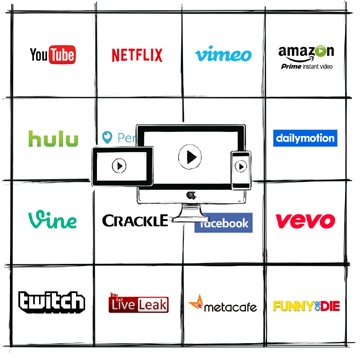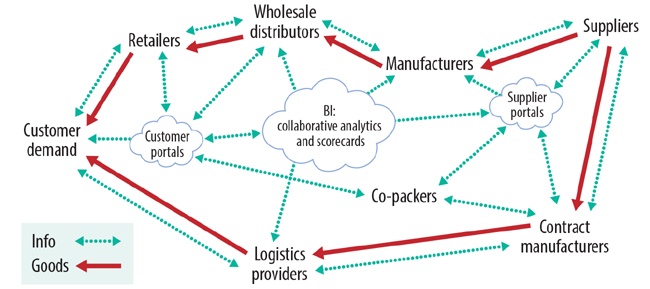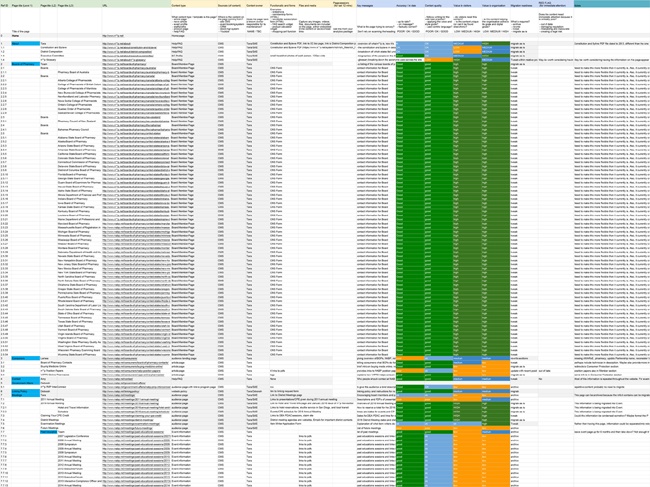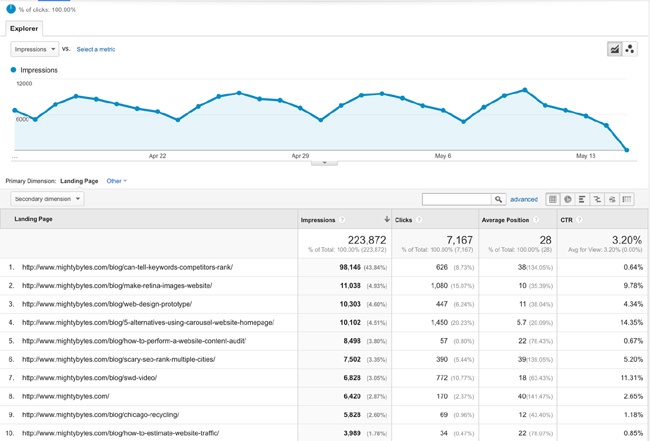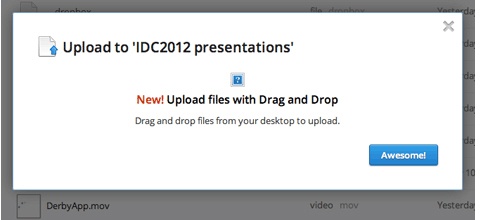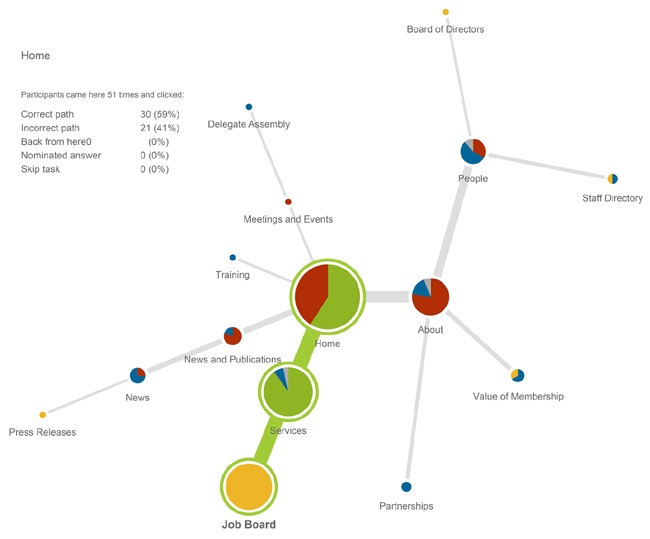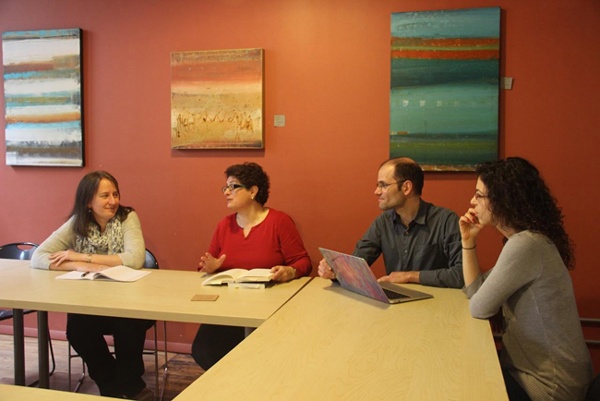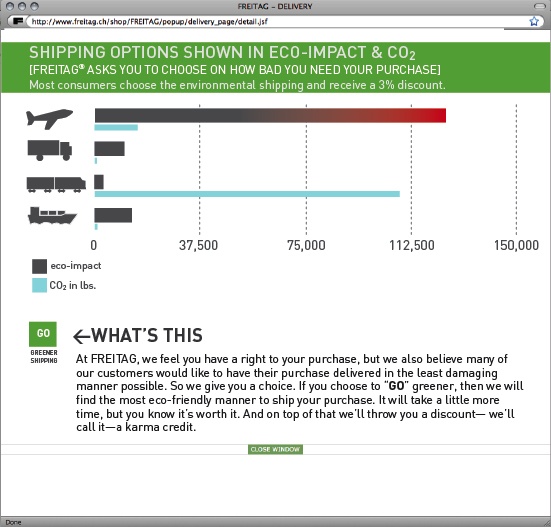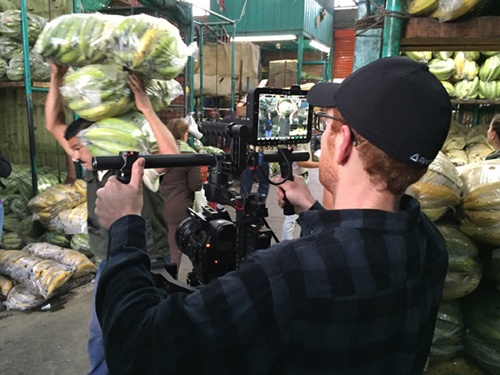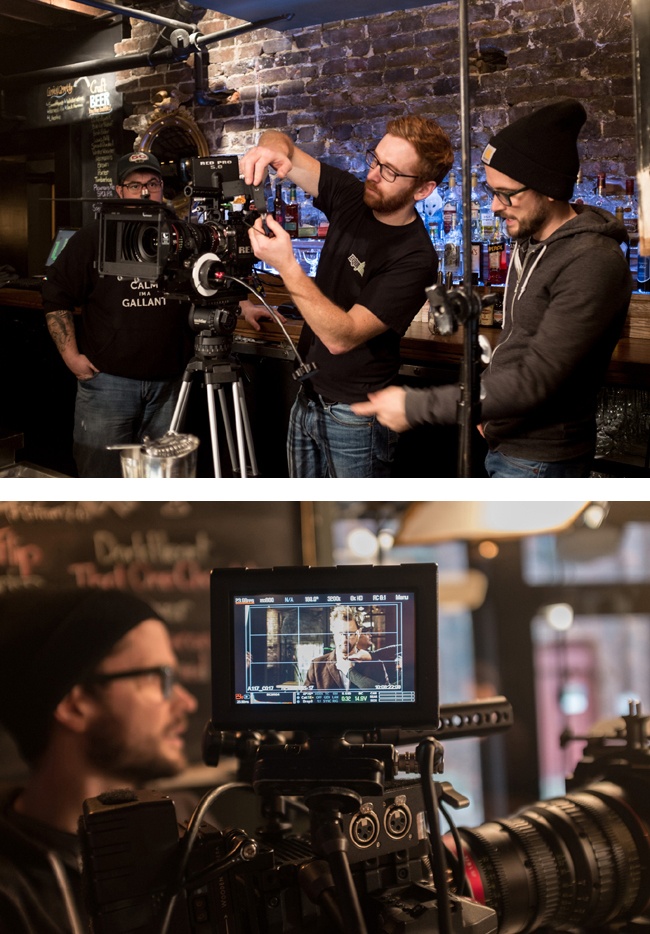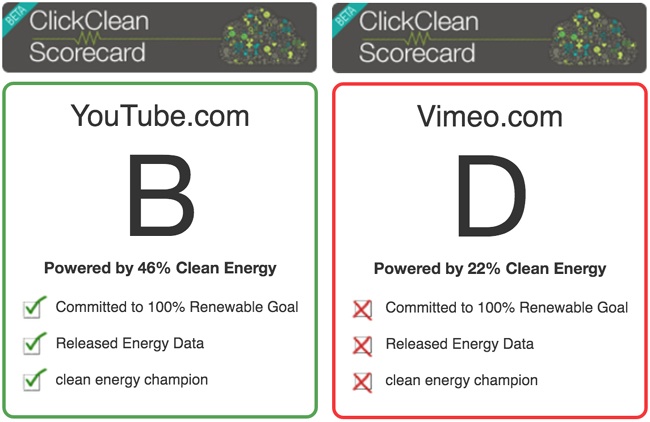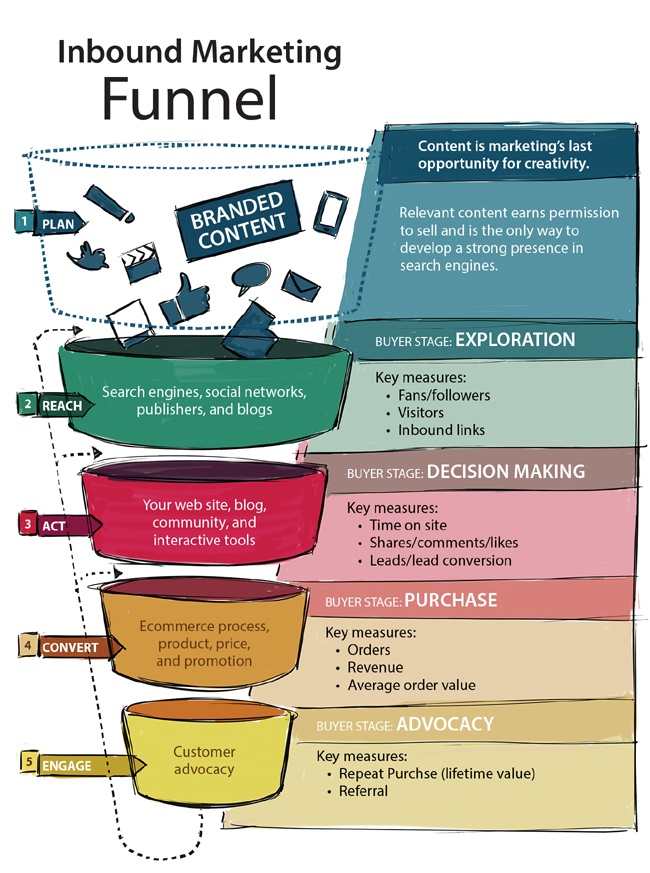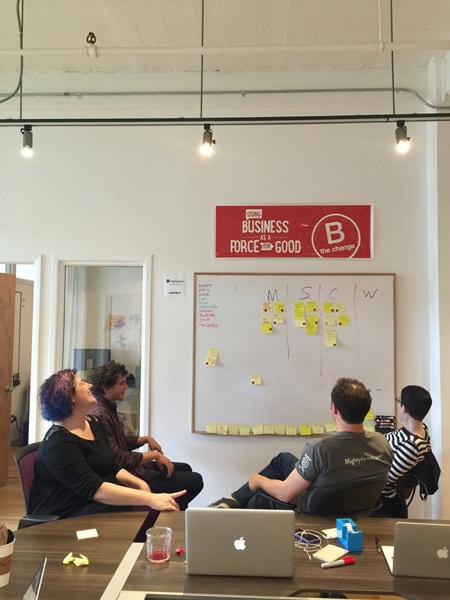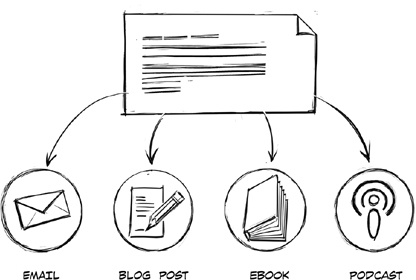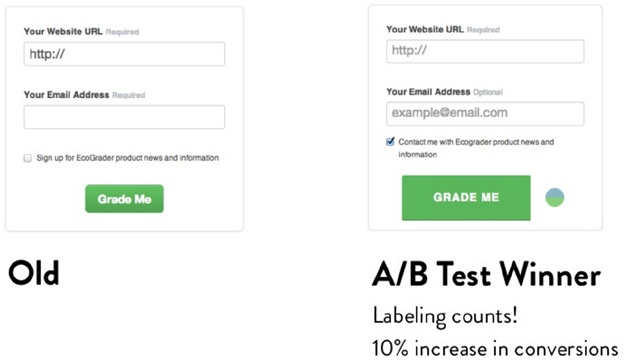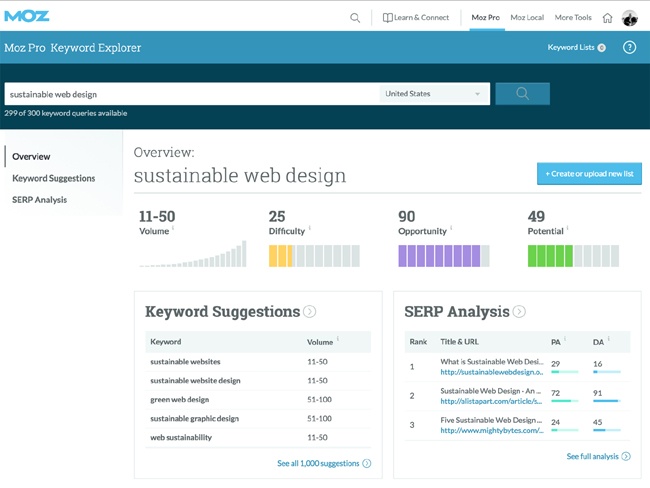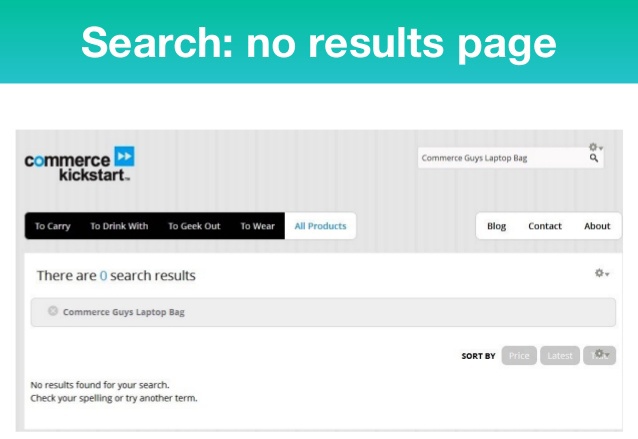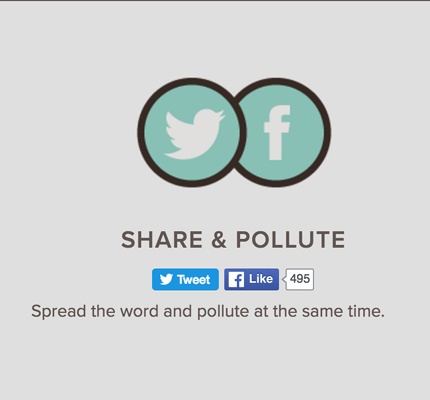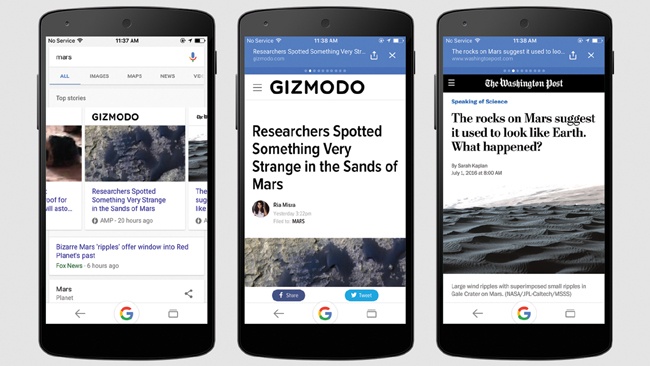Chapter 4. Content Strategy
What You Will Learn in This Chapter
In this chapter, we will cover:
Why content “findability” and search engine optimization (SEO) are important for sustainability.
How you can make your own content more searchable and thus more sustainable.
Content strategy methods for streamlining the user experience (UX) and making it more compelling.
A few techniques for making streaming video more efficient.
Options for executing more sustainable social media strategies.
The Content Conundrum
The content explosion that’s happened on the Internet presents a significant sustainability challenge. Facebook’s 1.44+ billion global users alone spend an average of 20 minutes or more per day on the site.[111] Users in the United States spend twice that time. That’s nearly 30 to 60 billion collective minutes per day...just on Facebook! And although the company’s servers (as of this writing) are powered by 49% renewables with significant clean energy investments set to increase that number, it is still only one social network—albeit a really, really big one—on an Internet that seems to spawn a new social platform every week.
Similarly, users of popular video platforms like YouTube, Netflix, Hulu, and others make up more than 70% of consumer Internet traffic, a number expected to grow to 82% by 2020.[112] Then there’s the growth of bandwidth-heavy rich-media apps like Vine, Instagram, and Snapchat, as well as collaboration apps like Slack or Hipchat, plus virtual reality, IP video-on-demand (VoD), and so on. Newsfeeds alert us every few minutes to what’s happening in the world. Add to this hundreds of millions of blogs—some abandoned, some not—that take up space on servers all over the world, each of which use power 24/7/365. And those are just the consumer applications. Internet video surveillance and content delivery network traffic are also exploding.
We have blogged, tweeted, and posted ourselves to a place where content is so ubiquitous that it has the same shelf life as that cup of coffee you got from Starbucks this morning. And much like the cup that coffee came in, as soon as content has served its brief purpose, it is often destined for the great content graveyard of the Internet, out of sight, out of mind. Until, of course, you need to find it again. Then, you search Google, your Twitter feed, your Instapaper account, or even that old warhorse, Delicious, looking to find that one stat that will prove your point in an argument with a friend over cocktails.
All of this leads us to a very important question: How can we create a more sustainable relationship with our content?
Manoverboard’s Andrew Boardman says it’s quite simple: “All content should be remarkable—and worth sharing. A truly sustainable content strategy is driven by organizations that regularly care for and about their customers. Content should change minds—not drain phones.”
That said, as addressed in other chapters of this book, the answer isn’t to stop sharing cat videos. Jevons paradox has already happened. Instant access to information is empowering and transformative. There are, however, many great opportunities to improve the content we create, how it is created, where we share it, how we find it, and how we measure its impact. Let’s explore some of those opportunities.
Toward More Sustainable Content
Author and content strategist Kristina Halvorson seems to have the de facto definition of content strategy in her aptly titled book Content Strategy for the Web (New Riders, 2012):
Planning for the creation, delivery, and governance of useful, usable content.
If while implementing content strategy, we also plan to meet present needs without compromising those of the future, as a more sustainable philosophy would dictate, how do we proceed? In this glut of online information, how do we devise content strategies that meet our own organizational needs while also considering their environmental impact?
Chicago B Corp Orbit Media’s Andy Crestodina, author of Content Chemistry: An Illustrated Handbook for Content Marketing (Orbit Media Studios, 2014), says there is a blend of interests between sustainability and content marketing goals. “A content marketer wants lots of visits, and we want those visitors to stay as long as possible,” he says. “We want low bounce rates and long visits. Those are considered success metrics. But in the long run, we need to think about the desired outcome for us and for our visitors, and look for ways to meet those goals as efficiently as possible.”
Andy suggests asking yourself a couple of important questions:
Are your users finding what they’re looking for quickly? Or, are they bouncing back and forth between pages looking for more information? If so, the bounce rate might be low, and the time on site might be high, but you’re not meeting your goals or theirs. That’s a problem.
Are you attracting the right visitors? Ranking for an irrelevant phrase or inviting visitors who aren’t likely to act might look good for your traffic trend line, but again, this doesn’t meet your goals or theirs.
When considering sustainability alongside content strategy, it is critical to think carefully about what success really looks like. “You may find that some of the metrics that look nice in Analytics are just burning processor power and heating up a data center,” Andy says.
To understand how we can think more sustainably about our content, we first must be very clear about our own goals and how to meet them as efficiently as possible. Oftentimes, the elements that make a product or service more sustainable are those that also make it good for users. But if you’re not paying attention to the right details, it can be easy to fall into a trap of producing content that no one cares about without realizing it.
Defining the Rules
So what comprises a more sustainable content strategy? The process itself shouldn’t have a lot of waste and the results should be actionable and clear to users. First, the workflow for creating content should be efficient and collaborative in a way that gets to desired outcomes quickly. The content created should be easily found, organized clearly, tell a compelling story, and most importantly, motivate users to take action of some sort. It should also use display patterns that are relevant to the devices and platforms upon which it is being viewed. Finally, the road to more sustainable content begins with measuring the important stuff. Doing more of what works and less of what doesn’t is the quickest way to greening up your content’s “supply chain.”
Measurement is clutch
You can’t track what you don’t measure. If you’re not measuring performance, you don’t know what’s most useful. If you don’t know what’s most valuable to your users, it will be more challenging to trim waste, streamline your process, or create new content to meet their specific needs. You can measure most anything on a website or mobile app but that doesn’t necessarily mean you should. But where to begin? Where can you find the data to measure? Here are some ideas:
- Analytics
Metrics platforms like Moz, Hubspot, or Google Analytics will tell you which content is working and which isn’t. But be careful: just because these platforms can measure everything doesn’t mean you should. It can be easy to waste a lot of time measuring things that don’t matter.
- Tree testing
This is when you test navigation structures to help users find content more quickly.
- A/B testing
This is when you provide two different content or design options for users and track which performs better.
- Conversion optimization
This is when you test and improve a page or screen’s ability to incite users to perform desired actions.
Defining the most important metrics associated with project success will help you dictate which methods are most appropriate for testing results. And those metrics come from being very clear about your goals:
- Define needs
Be specific about what your users want and what you want. Sometimes the two can be mutually exclusive. Find common ground where both groups’ needs are in sync; otherwise, you’re just spinning your wheels.
- Define a goal
It is best to be specific, such as “grow email newsletter subscriptions by 10% in the first quarter.”
- Define content types
Which content will most help you reach those goals? Is it blog posts with clear calls-to-action (CTAs)? Downloadable white papers? All of the above? Plan to test each. Use those that work best.
- Associate analytics
What metric will prove that goals are being met? In the preceding example, it could be tracking white paper downloads or month-by-month subscription sign-ups.
- Benchmark it
Show improvement over time and compare it to your original goal. Are you reaching your goals consistently each month? Reevaluate and iterate. Repeat this cycle as necessary.
We will cover variations on this in the section Agile Content: A More Sustainable Solution?.
The content audit
With so much industry emphasis on creating content, how do you develop good practices for phasing out content? How do you figure out what’s working and what isn’t? Who will clean up the inevitable mess left by abandoned or nonperforming pages? Knowing this will help you to keep sites lean and streamline your content strategy moving forward. A great place to begin is with a content audit. It will help you to define the content that performs best and identify the weak spots.
A content audit contains a list of all the URLs on your site and defines important metrics like who owns the content; how it performs; if the URL is going to be retired, where should it redirect to; and so on. Some teams include keyword research in their content audits, as well. They can help content teams assess content performance, identify trends and content gaps, and keep track of editorial changes. Content audits are especially useful in the process of a redesign (because they require that a certain amount of content already exists). They are also action-driven. Here are some common action items when creating a content audit:
Remove (Can you dump it?)
Keep as is (Don’t touch it.)
Improve (Can you make it better? If so, how?)
Consolidate (Can it be merged with other content? If so, how?)
Keeping content sustainability in mind, consider two important things during a content audit:
- Cut ruthlessly
There’s no sense keeping pages that don’t perform well (or at all). If a page isn’t one of your top x performers (you pick the number relevant to size and scope of your project), it should go.
- Redirect pages
When cutting pages from a site, be sure to redirect the original URLs to the most closely relevant pages that still exist. This will keep search engines from registering 404 errors on your site, and it will help users get to the next best thing from what they were looking for.
In content marketing, failed efforts happen all the time. Iteration is key: you try a bunch of things and then do more of those that work, less of those that don’t. It’s a pretty simple equation. The problem is that most of the failed efforts tend to remain online, despite the fact that they serve little purpose. Outdated, unused, cryptic, or hard-to-find content is just taking up unnecessary space on your web server. It takes electricity and disk space to house that data.
But aren’t pages that get visited most often the ones that use the most electricity? Absolutely. If those pages are optimized properly, they are serving your company or organization’s needs as well as those of your customers, donors, and so on. Hence, they are helping to sustain your business. And that’s not a bad thing.
Overall, good measurement practices can help you pick and choose which content should stay and which should either be improved or deleted altogether, and a content audit can help with that. If you want to make an existing digital product or service more sustainable, begin by auditing your existing content. Here is a quick content audit experiment to try:
Open Google Analytics.
Run a report on the 100 most-visited pages over the past year.
Now, ask yourself these questions:
Are the pages listed at the top those that you want people to visit most?
Are people taking actions on those pages? In other words, are they serving your business needs? If you don’t know, you might need to set up some goals and funnels.
Can you improve those pages to better serve their intended purpose and drive conversions?
Do you see any surprises? Are there pages that should be in the top ten that are not? Are there pages at the bottom of the list that are key to your organization’s success?
Now look at the bottom of the list, those URLs that live on the island of misfit web pages. Ask yourself these questions:
Why is that page even a thing that exists?
Why did it fail?
What’s the rationale for keeping it?
Use your answers to these questions to drive the culling of pages. Remember, the most sustainable (and Agile) approach is to do more of what works and less of what doesn’t.
Some common tools used in content audits include:
Excel or Numbers (of course).
Screaming Frog for scanning the site and pulling URLs.
Google’s Webmaster Tools for importing query and keyword data.
Google’s Keyword Planner for researching keywords (if applicable).
If you want to merge data from some of these tools, use URLProfiler for compiling links, content, and social data from places like Google Analytics, Moz Metrics, Webmaster Tools, and so on.
Final word: it can be easy to get sentimental about past content. Your boss or the company’s CEO might want those photos of their fishing trip on the blog. If they’re not converting, they’re just burning pixels. If no one’s visiting, they’re just wasting server space. Ditch them. A content audit can help you make the case for that.
Information architecture
Content must be organized in a way that helps users find what they need as quickly as possible to maximize efficiency and be considered a more sustainable choice. This can pose challenges to information architecture.
For example, when web copywriters or brand strategists create clever or pithy button labels in the name of being “on-brand” this can significantly disrupt the ability for users to find what they need. These cryptic labels can also confuse users with disabilities who may need enabling technologies, such as screen readers, to experience your content.
Worse, structural issues and language clarity can go unresolved due to lack of clear ownership because information architecture questions often arise periodically throughout the life cycle of a project and thus affect all parties. Information architecture can be one of those nebulous terms where responsibility may not clearly be dictated. Is it the content strategist’s purview? The UX team? Decisions made about information architecture affect everyone on a project—most of all, users—so it’s important that conversations about navigational structure and labeling happen early and often. Design teams should clearly designate someone as “keeper of the IA” early in a project so that when these issues inevitably arise, it’s someone’s responsibility to address them.
To make content easier for users to find, test your navigation labels and drive information architecture decisions with test data. Should the navigation section be labeled “Portfolio” or “Work”? Should the form submission button say “Submit” or “Grade Your Work”? Is it easy for users to find content when given a specific task? These are important questions to which you need to know the answers. If you fail to answer them successfully, users will simply leave. Or worse yet, they’ll become frustrated through a nightmare of trial-and-error processes.
Tools like Treejack from Optimal Workshop, UsabilityHub’s Nav Flow Test, or UserZoom can be infinitely helpful to drive your navigation decisions with data. Users are given specific tasks like “make a donation” or “find a book by George Orwell,” and then they are faced with navigation structures planned for a digital product or service. If the majority of users successfully complete the tasks assigned, you’re in good shape. If not, you’d better change it up a bit.
These tools give you helpful metrics such as percentage of completion, time to completion, how many completed the task in the first try, and so on. This is incredibly helpful data when trying to streamline the amount of time it takes a user to find what they need.
Story Matters
It can be easy to get caught up in all the metrics, the navigation labeling, and the thousand other choices you need to make to ensure that your content performs well. But let’s not forget that when creating content, good storytelling is critical. After all, getting users engaged and inciting them to take action quickly is really what the Internet is all about. It’s also difficult work.
“Thankfully, writing is not one-way communication,” says Jill Pollack, owner of Chicago B Corp StoryStudio Chicago, a community and training facility for creative writing and corporate communications. “Good writing invites the reader to get involved in a dialogue and I believe that’s what makes good content marketing, too. Make sure you offer ways for your reader to participate in the discussion.”
“For anyone who employs content marketing, storytelling is key. It’s how humans have always learned and how they have always built community. Good stories come from having an authentic voice and the sincerity to build trust.”
Often details are what make a good story. On the Internet, content creators walk a thin line between sharing too many details and not sharing enough. Too many details and you risk losing the audience; not enough and, well, same thing...but for a different reason. How do you know you are sharing the right amount of details, or for that matter, telling a compelling enough story?
“My best advice is that whatever you are writing or sharing with your audience, take your time with it,” Jill says. “Read it at least three times. Consider the message. Have someone act as your editor to proofread and challenge your assumptions. And then, after all that, read what you have written and ask yourself if you have reached high enough and whether you’ve asked your audience to dream big enough. The biggest mistake content marketers can make is to underestimate their audiences.”
Here are some quick guidelines to remember:
Be clear: readers appreciate clarity.
Share your value proposition right up front.
Get to the point, but don’t leave out important details.
Always end with an ask or action item. Always.
But what about search engines? Isn’t this chapter about SEO and quickly finding content? It is indeed. But Andy Crestodina says good story telling and search engines aren’t mutually exclusive, nor should search strategies trump content quality. Ever. Andy recommends following these steps to align your content with search marketing efforts. Don’t target a phrase or promote a post in organic search, he says, unless you first do the following:
Sincerely attempt to create the best page on the Internet for your topic
Target a keyphrase only if it is truly relevant to your content
Use natural language, with full sentences (questions and answers) to help Google present simple bits of data right in search results, if possible
Although we could spend a great deal of time in this chapter talking about search algorithms, disavows, “black hat” SEO practices, and keyword ranking, Andy and Jill make the most relevant points when it comes to your content. Be true to its purpose and intent first.
Leading by example
Finally, there is one more very important role that good content can play: it can help users make more sustainable choices. Whether that means highlighting a more sustainable shipping option for a purchased product, rewarding users for making more conscientious choices, or simply by telling a compelling story about why one option is more eco-friendly than another, good content can make a real difference. Always be on the lookout for opportunities to highlight sustainability first. Don’t believe me? Test it and tell me what you find out.
Video Content
Using video to tell a story can be a more compelling way to get a message across. It can also be more bandwidth-intensive and use more energy. With video content taking up the majority of consumer Internet traffic, it’s important that videos get to the point, are compressed properly, and when possible hosted on servers powered by renewable energy.
The story diet
Andy Crestodina notes that putting your script on a diet is the first place to begin when it comes to streamlining video content. “Skip the long intro and get straight to the point,” he says. “If you can get your five-minute video down to three minutes, you just did everyone a favor. With video making up so much of online data, this is good for both the viewer and the planet.”
In other words, a web video should increase value to the same extent it uses more energy to produce and consume.
Content guidelines for video scripts are very similar to those mentioned before but even more important in the editing process. Video shoots always capture more content than they need and it can be very tempting to save time by just leaving this bit or that bit in your file. Don’t do it. If it doesn’t fit your video’s specific purpose, if it doesn’t serve the goal of informing, compelling, or converting users, get rid of it.
This is doubly important for videos that play on mobile devices, which at this point is all of them. Even though your video platform of choice will do its best to serve files at a bitrate that’s appropriate for your bandwidth and processor speed, a seven-minute video that should have been three still wastes four minutes of a user’s time, four minutes’ worth of streaming data, and four minutes of battery time on the user’s device. That’s bad news all around.
Video workflows
Streamlining the video creation process can make for a more sustainable output. The tools used to create and edit video can use up large amounts of electricity. The same principles we covered in our discussion of sustainable workflows in Chapter 3 apply here as well.
Canadian media production company and B Corp Hemmings House creates documentaries and educational, promotional, corporate, and many other types of video-based content. CEO and Executive Producer Greg Hemmings says that sustainability is very important to the company. “Not only does sustainability reference the health of our environment, but also our communities, our society, and our business model,” he says. The Hemmings House team regularly explores new ways in which to apply the sustainability principles they apply to the rest of their business to their digital footprint. “Hemmings House is a digital firm. We still have a ways to go in reducing our digital carbon footprint, as video production produces very large files. But we’re getting there”
In addition to encouraging employees to bike and walk to work, supporting local businesses and sourcing local as much as possible, Hemmings House takes additional steps to make its production workflow more sustainable, as discussed in the following sections.
Development/preproduction
When preparing for and in the early stages of a project, Hemmings House uses the following tactics:
Highly recyclable paper used in the office.
For larger print-related projects, use other B Corps such as Mills Office in British Columbia.
Digital call sheets.
Production meetings are handled with Skype or Google Hangouts to avoid in-person development meetings unless absolutely necessary.
Employees walk and bike to work as much as possible.
The company belongs to Sustainable St. John, a local membership-based sustainability organization.
Post-production
In the office and edit suites, the Hemmings House team does the following:
Implements low-energy consuming standards (turning computers off at the end of the day rather than running them all night).
Work in sunlight when possible rather than using overhead lights.
Turn the heat down at the end of the day.
Their editors use a significant amount of electricity with power-hungry editing apps like Avid, Photoshop, and After Effects. They reduce consumption by always setting computers in power-saving modes, using sleep modes, and shutting down all computers when not in use.
They also transfer a number of files via transfer services like Hightail. “We believe this is less of an environmental impact than mailing footage on a USB key or hard drive,” says Greg. “However, finding a green-powered FTP service is something we should do going forward.”
Distribution
Green hosting with servers powered by renewable energy is the next step for Hemmings House in addressing how the company distributes video files. It currently hosts most of its videos on YouTube and Vimeo.
Video compression
The best way to keep bandwidth use down is to encode video with the highest possible compression while still maintaining image quality. Streaming services will automatically compress the video to many levels of quality and then dynamically swap in the best possible version that a viewer connection can support. YouTube aspires to streaming in HD if that’s what you uploaded. But is it really necessary? For many videos, it’s not.
The audio tracks of your video files is another area where you can save on bandwidth. Talking head videos don’t need stereo audio tracks. “Export the audio as mono,” says Andy Crestodina. “Save some bandwidth and your viewers will never notice.”
Accessible video
Finally, it is important to make video and audio accessible to users with disabilities. The W3C lists the following recommendations for making a video accessible:
Text-based transcript of the script. This is required for accessibility compliance, but it’s great for search engines, too.
Audio description that explains what’s in the visuals. This is required only for content where audio does not already describe what is in the visuals, such as in things like charts and diagrams.
Onscreen captions are important when people need to see what is happening in the video and get audio information at the same time.
Sign language is helpful for hearing-impaired people who use signing as their primary language. This is not typically required.
Agile Content: A More Sustainable Solution?
Lean, Agile, growth hacking, Scrum, Kanban. These variations all have a common goal: make better decisions faster. The results come in different forms, but they often use fewer resources while yielding higher quality outcomes, which could be considered as more sustainable (each project being its own unique snowflake, of course). As we discussed in Measurement is clutch, the best way to use fewer resources is to do more of what works and less of what doesn’t. The best way to do that is by measuring what you learn each step of the way.
Agile methods support this philosophy, and although they are most commonly applied to software projects, they are really relevant to nearly any project or initiative. Author Pamela Meyer shows how they can be applied to entire organizations in her book The Agility Shift: Creating Agile and Effective Leaders, Teams, and Organizations.[114]
“The success of any project or process revolves around the ability to effectively communicate, collaborate and coordinate, as well as to learn continuously,” says Pamela. “Leaders and teams in organizations across industries are making agility a strategic priority and shifting their mindset and practices to stay competitive in a rapidly changing market.”
Being agile in your content means people need the authority to run experiments. Teams should have the knowledge to track important metrics and make decisions to pivot (or not) based on what they learn. They should be able to react quickly both to external forces, like an industry upset or new development by a competitor, and to internal forces, such as new company developments, budget cuts, customer service needs, and so on.
For many companies, some version of this process might likely exist already. But here’s one thing that almost always is overlooked: organizations also need processes in place to clean up all that junk that didn’t work. It takes up server space and wastes electricity. Good content teams also have the ability to regroup and do housecleaning to reduce waste when necessary.
A scientific approach
We discuss ongoing testing with real users as part of any project in other sections of this book. The knowledge gleaned from running small content experiments can yield insights that inform how best to proceed to the next step, reducing necessary resources to execute. Creating a content hypothesis and then proving or disproving that hypothesis can greatly help reduce wasted efforts. Even though it can be very tempting to give in to the content beast, publishing and posting everything that comes to mind, it is best to take a scientific approach to your content. “Content marketing must be approached like a scientist.[115] There are no mistakes, just feedback,” says Search Engine Journal’s Srinivas Rao.
Lean startups and most Agile organizations accomplish tasks in iterative cycles with very specific target goals and measurable outcomes. Taking a tip from them could yield potentially more sustainable content strategy and marketing results. At the very least, the process will be more sustainable because its very nature is built around reducing waste.
In its simplest form, a content experiment could go like this:
Specify a goal.
Specify a metric—or key performance indicator (KPI)—that represents the goal.
Create content to achieve the goal.
Analyze the metric—did you get closer to the goal?
Improve and try again.
Look familiar? Let’s apply that to a common sales funnel scenario for an online subscription software company trying to increase sales. A 2014 study by BrightLocal on how online reviews and testimonials influence purchasing decisions showed that nearly 9 out of 10 consumers have used online reviews to help them make decisions about whether to support a local business (4 out of 10 do so regularly).[116] In this scenario, the company hypothesizes that it can increase sales 10% by adding customer testimonials to its website. To reach this goal, it knows that it needs to sell an additional 100 subscriptions in month 1,110 in month 2, and so on, and so on (keeping the math easy here).
The team collects several quotes and photos from happy customers. It then adds short customer case studies to key sections of its website with CTAs. It configures goals and funnels in Google Analytics that track users from the aforementioned CTAs on each case study page through the process of a purchase. If users get to the “Thank you for your purchase” page, a goal has been met. Then, the team tracks performance of that goal for three months.
Here’s how that might break down:
Goal = increase sales lead 10% month-to-month.
KPI = # of completed goals in Google Analytics.
Content = featured customer case study.
Analysis = Reached 60% of goal in month 1, or 60 additional subscriptions.
Improve content and run experiment again.
Analysis = Reached 88% of goal in month 2.
Improve content and run experiment again.
Analysis = Reached 112% of goal in month 3.
Improve content and run experiment again.
In the preceding example, though the experiment initially came short of the goal, results were promising enough that it was worth running the experiment again with some tweaks. Improving case study content might increase conversions, for example, or perhaps the CTA wasn’t clear enough.
But what if the test had yielded different results? What if, after running the experiment several times, they still didn’t reach a desired goal; perhaps it’s time to try another tactic with a different type of content.
It is also important to isolate whether the users who converted actually came from the efforts of your experiment. In this example, it would be critical that the first step in funnel measurement started on the case study page. Even though the end result might be the same as in other experiments, it is important to segment the traffic in a unique funnel that presents you with just the information you need to know.
The important thing to remember is that this process was devised from the ground up to reduce waste. If something is not working, the data tells you when to pivot so that you to waste less energy by concentrating your efforts on things that do work.
Preparing over planning
Planning is wonderful and necessary. It is human nature to plan. Too much planning, however, can use up unnecessary resources. Those resources are wasted if the idea isn’t validated by the people who are actually going to use the content, software, or application (or whatever your end product happens to be). One of the many great things about taking an Agile approach to content is that you can prepare versus plan. In other words, rather than meticulously planning out all your content efforts, focus on preparing to use what you learn from each content experiment to inform efforts on the next iteration.
We once waited two months for a set of personas from a content strategist. Were there quick experiments we could have run during those two months that might have yielded similar, actionable insights? Of course there were.
This is not to say that you should throw planning entirely out the window. Just make sure it’s the right amount of planning. Although an editorial calendar can be helpful to keep content marketing teams on track, for instance, it can also be limiting. If something lives on your editorial calendar because it’s always been there, yet the results don’t perform well, that calendar is doing you a disservice. Similarly, spending exorbitant amount of time on strategic planning can be detrimental if the strategy in said plan doesn’t actually work.
Emily Lonigro Boylan of LimeRed shares this example:
We were waiting for a client to finish up a six-month strategy project. We couldn’t build their site until this strategic effort was over. Or could we? Maybe we could help, maybe there was a component of the site we could build and launch that would raise their donation rates right away. Maybe something in the six-month strategy would be outdated by the time it was over. Embracing agile methods can fix that. When you think of what you can save in personnel time, file creation, revisions, wasted effort, it’s staggering. If your project can support rapid iteration, why not?
Lessons from Agile content strategy
Here are some lessons learned from applying these methods to content strategy and marketing efforts:
- Embrace limitations
Sometimes, the simplest solution can be right in front of you and you don’t even realize it. Embrace the limitations of your timeline, budget, or resources and try to find simpler, faster tasks that might accomplish the same results. For instance:
Start small
Use social networks to bounce ideas first before executing them.
Set realistic goals
Keep word count low, one idea per post, and so on.
Spread it thin
Create something small—like a prototype—that you can share with a small but targeted group of people for feedback.
For example, when we considered starting a blog series on sustainable web design practices, we created a single blog post outlining goals for the series. We then tested that post with a targeted network of agencies, B Corps, Climate Ride beneficiaries, and sustainability practitioners. The feedback we received inspired us to proceed. Social media can provide an effective channel for this approach as well.
- Always test
This should be pretty obvious by now, but here are some ways to keep testing an important and ongoing part of your process:
Create a fast feedback loop
Use digital tools to get feedback quickly, early on.
On-the-street interviews
Ask quick questions of random strangers.
Find real users
The importance of feedback from real users cannot be overstated.
Keep them involved
Figure out ways to incentivize real users if that’s possible.
On many projects, we have used SurveyMonkey and other simple digital tools to quickly validate our ideas, when possible with real users. It is amazing how helpful people will be if you just ask nicely. Plus, as just noted, with content it can be easy to use social networks, online groups, or UX communities like UsabilityHub.
- Measure what matters
Alistair Croll and Benjamin Yoskovitz, who wrote the book Lean Analytics (O’Reilly Media, 2013), suggest finding that one metric that matters and focusing on it. That one metric might change over time, but by only focusing on the most important thing, you can be assured that your efforts don’t become splintered. Keep the following guidelines in mind:
Choose wisely
Don’t become overwhelmed by metrics.
Benchmark it
After you have defined it, iterate often until you discover what really works.
For example, when we began building our website sustainability tool, Ecograder (which we will cover in more detail in Chapter 7), building awareness was our one key metric, so we focused on top-of-funnel metrics, such as likes, mentions, retweets, shares, and referral traffic from social networks, and tried to increase those.
- Consider curation
Even though this might not work for every endeavor, curation can be an easy way to find out how something performs without investing significant efforts in it. Consider using the following approaches:
Share
By sharing similar content created by others first, you can get an idea of how yours might perform.
Listicles
Create a list of other posts about a certain strategic topic. Test performance of the post.
Content shared by other people is how I learned about sustainable web design techniques in the first place. Similarly, many early posts on the topic were curated lists of other people’s posts and additional resources. These can be very helpful ways to quickly gauge how a piece of content might perform.
- Repurpose your content
Repurposing your content into new forms can help you save resources. Don’t simply duplicate your existing content though. Put some time into making each piece unique, though based on the same concepts. Because search engines can’t identify which version of a piece of content is the original unless you inform them so, you could suffer search ranking penalties and traffic losses.
Figure 4-16. An email is a blog post is an ebook is a podcast—content is everywhere, so repurposing it can help you save time and resourcesIf you do get requests to share a post you wrote on another blog, use a “rel=canonical” tag in the page’s HTML head that indicates to search engines that your first post is the original. Consider using the following approaches:
Content types
Translate blog posts to ebooks, videos to podcasts, and so on.
Guest posts and social networks
Rewrite blog posts to use on external sites or social networks.
We used content from our blog series on sustainable web design to create a sustainable product development manifesto, which is a downloadable resource meant to help product teams make more sustainable choices when developing a digital product. We also used many of those blog posts as the basis for presentations, other guest posts, videos, and so on. Guest posts on high-ranking sites will also help you build high-quality inbound links to your site.
- Drive conversions
A/B testing content can be an effective way to determine which version works best quickly. Sure, it takes more time to create both A & B variants, but you can potentially glean more valuable info to save time on future efforts. If possible, test only one thing at a time, like language used for a CTA or placement of a button. Testing multiple items at once—known as multivariate testing—can lead to muddled results because it can be difficult to isolate which specific item caused the test winner to perform better. Consider using the following strategy:
Create two versions
Figure out what you want to test and create two variations of your page.
Run a test
Use a tool like Optimizely or UsabilityHub to split test two versions of the same page.
Track results
Whichever version performs noticeably better is the one to choose moving forward. Use this information to inform future efforts, as well.
When creating Ecograder, we knew we wanted to collect the email addresses of those who used the product, but our team had differing opinions on how to accomplish this. Some wanted the email collection to be mandatory. Others thought that was intrusive. So we split-test some options over the course of a couple weeks. In the end, we came to consensus on a prechecked but optional box that added email addresses to our database. This decision was based on which options in our tests performed best while still giving us what we needed (which was to collect emails).
More Sustainable Search
Content can’t serve its intended purpose if it can’t be found. We have all been there: you need a piece of information quickly, so you pull out your phone, type some keywords into a search engine and are rewarded with 3.76 million results, only a few of which offer the information you need. You spend a few minutes bouncing from result to result not getting the right answer—rarely moving to page two of the results unless you have to—perhaps instead refining your criteria and running another search. All the while, you’re burning electricity: on the frontend as you pore over results; on the backend as you run multiple searches. But should you really care about that?
Back in 2009, Google noted that a typical search is equivalent to about 0.2 grams of CO2.[117] By its own admission, “the average car driven for one kilometer produces as many greenhouse gases as a thousand Google searches.” So the impact of a single search is minuscule. But consider that, according to Internet Live Stats (as of this writing), Google processes about 1.2 trillion searches per year—the Jevons paradox in action once again.[118] That’s still potentially 240,000 annual metric tons of CO2 generated by one search engine, which is nowhere near the impact of the more than 1.2 billion vehicles on the road—each emitting about 4 tons of CO2 annually—but still significant.[119] When we talk about minimizing greenhouse gases, every little bit helps.
Now, Google claims that it’s been carbon-neutral since 2007, so presumably the CO2 produced by all Google searches has been either offset or powered by renewable energy, which is a great thing.[120] What Google’s numbers don’t likely take into account is all that time you spend bouncing from search result to search result trying to find the information you need. That burns electricity, too. A lot of it.
The philosophy here for sustainability is the same as in Chapter 3: the easier your content is to find, the less electricity is burned on the frontend. Although sorting and categorizing all the Internet’s websites might be Google’s problem, making sure people can find your own content is yours. Search marketing (including SEO) and social media marketing are two ways by which you can get your content in front of the right people at the right time.
But it only begins at finding content. After that content is discovered, it’s equally important that your content be compelling, answer questions quickly without barriers, and help people make more sustainable choices. In other words, if someone wants to purchase a water bottle from your site, for example, how can you help them make clear choices quickly and incentivize them to choose a less impactful shipping option? Or what if they have general questions that could easily be answered by an FAQ page? Good content practices—strategy, information architecture, optimization, measurement, and so on—can help.
SEO and sustainability
When I asked him about SEO and sustainability, Andy Crestodina noted that saving visitors time and saving data center energy are one and the same. “True SEO is about cooperating with a search engine to help people get to the right answer quickly and efficiently,” Andy says. “The goal is to create a page with a complete, detailed answer that ranks for a relevant phrase. This means visitors who find the page are likely to stay, find answers to their questions, and complete their goal. It’s inefficient, both for energy and time, to try ranking a page that doesn’t answer the question completely.”
So, does that mean search engine-conscious content creators shouldn’t use keyphrases anymore? No, but it does mean that they’re not the only thing to consider. First and foremost, as Andy said, focus on quality. Many other factors—such as social media, user reviews, local citations, inbound links, and so on—also factor into how a page finds its rightful place on the Internet.
Plus, keywords are still relevant for your own purposes in thinking about common content themes and topics you want to cover, for taxonomy (organizing content and potentially navigation), and for things like AdWords campaigns. After all, when someone asks you what your content is all about, you can no doubt tell them quickly: somewhere in that answer lies a keyphrase or two. Plus, it can also be helpful to know if the topics you write about are also popular topics that many others write about: the more popular a topic, the more difficult it will be to rank for terms associated with it. In SEO parlance, these have historically been known as broad-head and long-tail keywords, and are an indicator of ranking difficulty for your content topics.
Dr. Pete Markiewicz notes that long-tail keywords—those that have lower search volume but are generally more specific—are more sustainable. “You’re uniting very scattered audiences at low search cost to sell products and services that would be prohibitively expensive to do otherwise (e.g., Orphan Drugs). In other words, SEM with long tail is more sustainable than SEM with popular keywords.”
Keywords and phrases play a role when optimizing page tags, as well. However, for the keyword description metadata (where SEOs of yore used to stuff every keyword they could), not so much. That said, there are some practical places to optimize a page for a relevant keyphrase; however, make sure you do this after writing the best possible piece on the Internet for your topic (as discussed earlier in this chapter).
Here are some places where keywords and phrases still have relevance within a page:[121]
- Meta description
That snippet of copy that appears on search engine results page can make or break whether a user clicks through to your page. It should be clear, contain your ranking keyword, and be no longer than 155 characters.
- Title tag
Keep it short and sweet (55 characters or less) and use your page’s primary keyphrase.
- Header tags
Your H1 and H2 tags advise a search engine that the content within them is important and are great places to include keywords.
- URL
Include the keyphrase you plan to rank for at least once in the page’s URL. Make sure it also describes what the page is actually about in a way that will be helpful to real users.
- Content
Yup, you probably included keywords and phrases in the body of your content without realizing it. They typically appear more frequently in content than other words or phrases.
- Alt tags
Including descriptive keywords in alt tags for your images not only helps search engines but also assists people with disabilities.
Finally, and perhaps most importantly, any place where keywords or phrases are read by users should sound natural and not obvious. Always make it human-friendly before robot-friendly.
Search on site
No conversation about sustainable search is complete without mentioning your site’s own internal search engine. If you don’t have one or if site visitors can’t use it to find what they need quickly because it is not properly configured, you are not only doing your users a disservice, but also wasting energy. This might seem like a no-brainer, but you might be surprised at how much customization is required to get an out-of-the-box search plug-in for WordPress or Drupal module to behave intuitively for your unique content needs.
Here are some questions to answer:
Can the search field be used effectively on mobile devices?
Does it properly interpret search queries that contain nonstandard characters?
Do search queries include content that exists in third-party systems, like shopping carts, CRMs, content management systems plug-ins, or donation engines?
If your onsite search engine can’t perform these tasks, you’re frustrating users and wasting time and energy.
More sustainable social strategies
In 2014, we passed a tipping point of more mobile than desktop users on the Internet. As of August 2015, more than 2.2 billion of the planet’s nearly 3.2 billion Internet users were active social media users with active mobile social users growing 23.3% in the previous year at an average of 12 new users every second.[122] Facebook alone has almost 1.5 billion users. It’s clear we like sharing our cat videos.
But what does this mean in terms of sustainability? Well, according to Greenpeace’s 2015 Clicking Clean report, not all social networks are created equal.[123] Whereas Facebook, Instagram, Snapchat, Pandora, Etsy, Flickr, and Google+, for example, are all either powered by data centers using primarily renewable energy or have made commitments to doing so, LinkedIn, Pinterest, Vine, Vimeo, Twitter, Tumblr, Reddit, Netflix, Hootsuite, Soundcloud, and many others as of this writing still have not yet transitioned, or even committed to, renewable energy. Many of these social platforms are hosted by Amazon Web Services (AWS), which we have covered in other chapters.
What is the trade-off between marketing and sustainability? Marketers want to drive people in droves to their sites, social media profiles, and other places where they publish. This, of course, drives up usage. Is this something content marketers and strategists should worry about?
Jen Boynton, Triple Pundit’s editor-in-chief doesn’t think so. “If a company were to ask my advice in this regard, I’d advise them not to worry about it as a part of planning,” she says.
Her reasoning is that many complicated decisions go into creating content strategies and the data centers of social media companies are difficult to control or influence. “People’s time and energy is very limited. Worrying about the emissions of a provider of a very small service like a Pin or a Vine is a distraction from larger sources of emissions that could be tamed.”
That said, she notes that there are other ways for content-driven companies to get involved and drive change. “If a company is concerned about this source of emissions, perhaps because social media is a huge amount of their business, we would advise them to advocate on behalf of energy efficient and renewable energy–powered data centers rather than avoiding using those problematic services,” she says. “Advocacy can include direct action, such as publicly asking for change, and supporting the efforts of groups like Greenpeace to publish lists of bad actors and the like. This is a faster, more efficient route to change.”
Orbit Media’s Andy Crestodina encourages people to be as aware as possible of these issues, but take a holistic approach to how you address them. “There is a cost for our actions. When we don’t see that cost, there is a high risk of big negative impact,” he says. “Distributed costs with concentrated benefits: this is a formula for problems.”
Andy recommends being very deliberate in all online actions. “Don’t put something out there unless you believe in it and unless it matters to you, your marketing, and your audience. This applies to both marketers and consumers. Don’t stream it unless you’re consuming it. Don’t share it unless you care about it.”
Potential Barriers and Workarounds
All of the tactics in this chapter can help make your content workflows more efficient and use fewer resources in the long run, but there are still potential barriers when it comes to a more sustainable relationship with our content.
Awareness
Awareness is a big one. We have adopted a disposable mindset to all things Internet, especially when it comes to content. The general public remains blissfully unaware of the power and resources it takes to bring Jessica Jones or the latest J.K. Rowling tome to their iPad, even though in some cases the environmental impact could be worse than a printed counterpart or DVD. Content creators in the know should take Jen Boynton’s advice and advocate for online platforms, Software-as-a-Service (SaaS) products, and social networks to embrace efficiency and, more importantly, power their servers with renewable energy.
Campaigns from Green America, Greenpeace, and others have already targeted companies like Amazon, Twitter, and Pinterest while also helping Apple, Facebook, Google, and others move more quickly toward renewable energy.
Shifting Sands
Also, things are changing. For example, since 2014, Google penalizes nonadaptive/responsive websites in search engine results, giving mobile-friendly content a boost in the rankings. Plus, the semantic web and microformats continue to hold the promise of making search more intelligent and contextual. These advances will help users find what they need even quicker.
Related, in late 2015, Google worked with dozens of other publishers and technology companies to create the AMP project, an initiative to make web content load faster on mobile devices.
Similar to Facebook Instant Articles (closed source), AMP HTML (open source) offers a subset of HTML with limited and specific JavaScript features available. It is designed for content meant to be read rather than interacted with and offers functionality for including ad tracking and analytics code. “AMP is a fantastic industry-collaborative approach to make the mobile web faster,” says Michael Ducker, Group Product Manager at Twitter who collaborated on the project.
In February 2016, Google integrated AMP Top Stories into all its mobile search results, giving mobile users faster access to popular search results. This is great news because only 5% of mobile media time is spent with the mobile web (the rest is in apps), according to data from Yahoo’s Flurry unit. These low numbers are due to poor UX that results from slow page-load speeds, malware, and low-quality ads.
Conclusion
This chapter explored the basics of good search engine strategies and why those strategies help users find content faster. We also explored the importance of getting to the point quickly and telling an engaging story as well as content’s role in helping users make more sustainable choices. In the spirit of good storytelling, we also touched on ways to make streaming video more compelling, efficient, and quicker to download. And finally, we talked about content marketing and the role sustainability can potentially play in sharing your story.
Action Items
Want to explore more of the ideas outlined in this chapter? Here are some things to try:
Try to tell your story in 50 words or less. How about 20 words or less? In 140 characters?
Create a content hypothesis and run a short experiment to check your hypothesis using the approach outlined earlier.
Run your site or application through HubSpot’s Marketing Grader or Open Site Explorer to see how it performs. Consider a plan for improvement. Begin by brainstorming some ideas.
Want to know how difficult a particular keyword might be to rank for? SEMRush’s Keyword Difficulty Tool can tell you in just a few clicks (https://www.semrush.com/features/keyword-difficulty).
[111] Jillian D’Onfro, “Here’s How Much Time People Spend on Facebook per Day”, Business Insider, July 8, 2015. (http://www.businessinsider.com/how-much-time-people-spend-on-facebook-per-day-2015-7)
[112] Cisco Visual Networking Index: Forecast and Methodology, 2015–2020 (2014). (http://www.cisco.com/c/dam/en/us/solutions/collateral/service-provider/visual-networking-index-vni/complete-white-paper-c11-481360.pdf)
[113] Source: https://medium.com/uie-brain-sparks/content-and-design-are-inseparable-work-partners-5e1450ac5bba#.3fm94eidn
[114] Pamela Meyer, The Agility Shift: Creating Agile and Effective Leaders, Teams, and Organizations (Brookline, MA: Bibliomotion, 2015).
[115] Srinivas Rao, “Applying Principles of Growth Hacking to Content Marketing”, Search Engine Journal, October 6, 2013. (http://www.searchenginejournal.com/applying-principles-growth-hacking-content-marketing)
[116] BrightLocal, “Local Consumer Review Survey 2014”. (https://www.brightlocal.com/learn/local-consumer-review-survey-2014)
[117] Urs Hölzle, “Powering a Google Search”, Google Official Blog, January 11, 2009. (https://googleblog.blogspot.com/2009/01/powering-google-search.html)
[118] Internet Live Stats, “Google Search Statistics”. (http://www.internetlivestats.com/google-search-statistics)
[119] John Voelcker, “1.2 Billion Vehicles On World’s Roads Now, 2 Billion By 2035: Report”, Green Car Reports, July 29, 2014. (http://www.greencarreports.com/news/1093560_1-2-billion-vehicles-on-worlds-roads-now-2-billion-by-2035-report)
[120] Google, “Google Green”. (http://www.google.com/green)
[121] Pratik Dholakiya, “Does Keyword Optimization Still Matter?”, Convince & Convert. (http://www.convinceandconvert.com/digital-marketing/does-keyword-optimization-still-matter)
[122] Simon Kemp, “Global Digital Statshot: August 2015”, We Are Social, August 3, 2015. (http://wearesocial.net/blog/2015/08/global-statshot-august-2015)
[123] Greenpeace, Clicking Clean: A Guide to Building the Green Internet, May 2015. (http://www.greenpeace.org/usa/wp-content/uploads/legacy/Global/usa/planet3/PDFs/2015ClickingClean.pdf)
Get Designing for Sustainability now with the O’Reilly learning platform.
O’Reilly members experience books, live events, courses curated by job role, and more from O’Reilly and nearly 200 top publishers.

